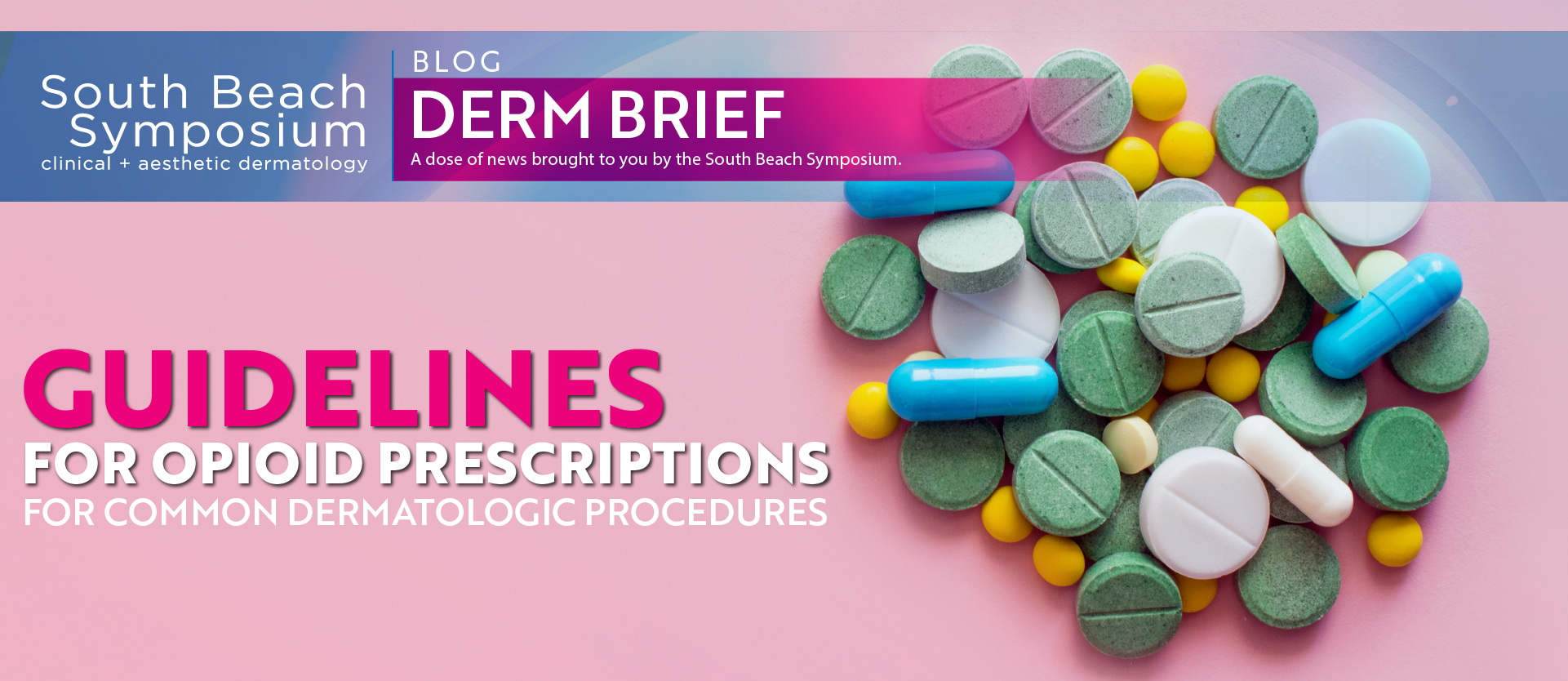With 130 people in the United States dying of opioid overdose per day, the opioid epidemic plaguing the nation shows no signs of slowing down. Misuse of and addiction to prescription pain relievers, heroin, and synthetic opioids has become a serious national crisis with substance use disorders and overdose rates rapidly increasing since 2017 when they reached a rate 6 times higher than in 1999. Among its state-level prevention efforts, the Centers for Disease Control aims to support healthcare providers and organizations to improve opioid prescribing protocols and patient safety.
Most commonly prescribed post-surgery, for moderate-to-severe pain relief, or as part of cancer therapy, opioids are also used in dermatology for the treatment of postoperative pain.
Prior guidelines recommended oral opioids as a second line of treatment after nonsteroidal anti-inflammatory drugs or acetaminophen post-surgical excisions and Mohs microsurgery. Even limited and short-term opioid treatment can put patients at risk of addiction, however, little is actually known about prescribing patterns in the field. The need for improved prescription protocols and a lack of procedure-specific recommendations prompted the recent publication of updated guidelines.
Opioid Prescription Guidelines
To create opioid-prescribing consensus guidelines for common dermatologic procedures, a panel of experts used a four-step modified Delphi method to conduct a “systematic discussion” with providers in general dermatology, dermatologic surgery, and cosmetics/phlebology. Taking into consideration the type of procedure, anatomic structures manipulated, and the expected wound healing process, the panel established prescription guidelines for pain management in opioid-naive patients undergoing one of the 87 common dermatologic procedures. For the purposes of their discussion, opioid tablets were defined as oxycodone 5-mg oral equivalents.
Expert Panel Consensus
Reported in the Journal of the American Academy of Dermatology, the guidelines indicate very select usage protocols for opioids in dermatology. The panel concluded that postoperative pain after most uncomplicated procedures – or 78% of procedures – could be adequately managed with nonsteroidal anti-inflammatory agents and did not require opioid treatment.
In addition, the panel noted that no specific dermatological procedure routinely requires more than 15 oxycodone 5-mg oral equivalents for pain management. Only 23% of routine procedure scenarios require 1-10 opioid tablets, while only one (Abbe flap for lip reconstruction) routinely requires 1-15 opioid tablets.
In cases in which non-opioid management is recommended, patients should be provided with specific instructions on how to schedule over-the-counter medications to provide sufficient relief during the postoperative period – with one gram of acetaminophen administered every eight hours and/or 400 milligrams of ibuprofen administered every four hours.
In cases in which opioid treatment is required, the panel suggests using them concomitantly with acetaminophen and/or non-steroidal medications to reduce the dosage necessary. As an alternative, combined opioid and acetaminophen/non-steroidal medications may be prescribed to improve pain management while minimizing opioid exposure.
The full list of recommended opioid-prescribing guidelines can be accessed here.
Limitations
The authors of the latest clinical guidelines acknowledge the paper’s limitations. Their recommendations are based on expert consensus and not on evidence-based outcomes research therefore, further evaluation is required to ensure the current guidelines are appropriate in the practice setting. They stress that guidelines should serve as guidance for the cautious, educated use of postoperative opioids but do not represent a one-size-fits-all approach. Thus, recommendations must be individualized to accommodate patient-specific comorbidities.
“A literature review should not be needed to further substantiate these recommendations,” lead author Dr. Justin M. McLawhorn wrote. “However, it is important to bear in mind that these recommendations are the synthesis of discussions from experts in the field and are not meant to replace quality evidence-based research.”
These procedure-specific opioid-prescribing guidelines may serve as a foundation to produce more effective and responsible postoperative pain management strategies after dermatologic procedures. Dr. McLawhorn and his colleagues hope that the newly issued guidelines can decrease variations in opioid prescription patterns and ultimately reduce the risk of opioid addiction.
















